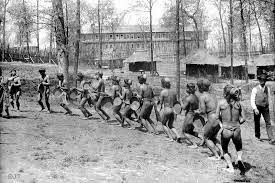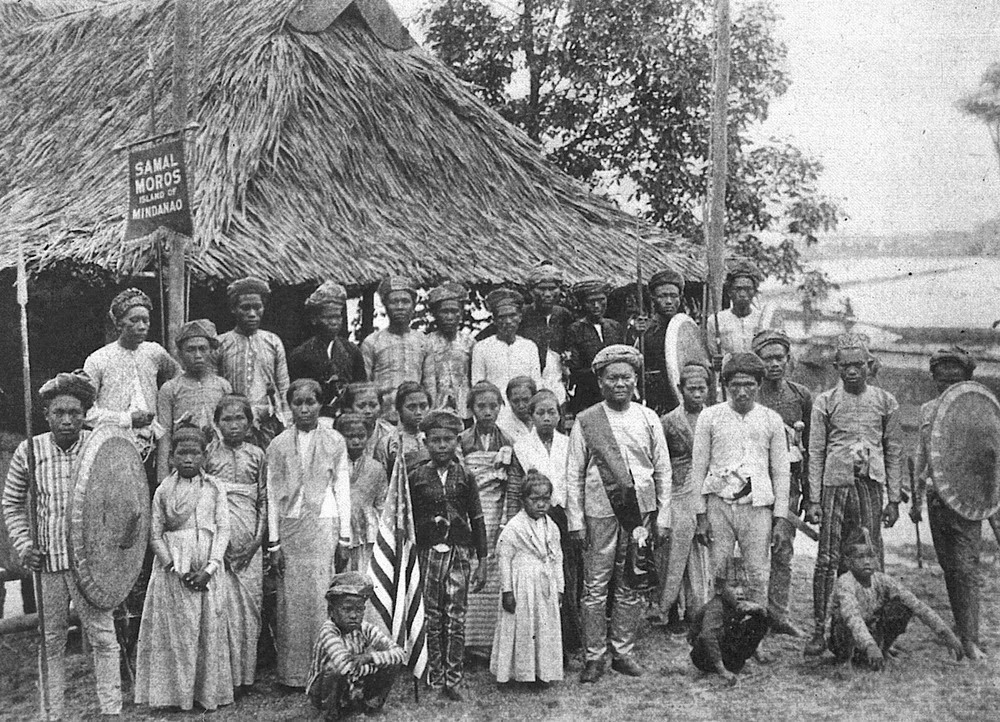By Ed Diokno
The sign calls them the Samal Moros from the island of Mindinao. I suspect they meant “Samar.”
111 years ago, Filipinos made their first big impression on America at the St. Louis Worlds Fair of 1904. Unfortunately, it wasn’t a good one. Filipino Americans today are still living with the repercussions of the myths and images of that initial meeting.
This month, Filipino American History Month, it is fitting we take a look back at that dark chapter in American history because its legacy still haunts Filipinos in America.
One of the most popular exhibits of the fair was the entry from the Philippines which featured villages from various parts of the country. There were Muslims,Moros, Tagalogs, Visayans and Igorot tribal people.
For most of the fair visitors, this was their first glimpse of the people from America’s Pacific colony with whom the U.S. fought the Philippine-American War. The U.S. media called it an insurrection, but from the Filipino point of view, it was a war for independence. The U.S. government spent $1.5 million to transport 1,300 Filipinos for the display.
The Spanish-American War had just ended and the government wanted to show the American public why it was necessary for the U.S. to civilize the “Little Brown Brothers” from the Philippines. Colonialism was still in flower among the European powers and the U.S. didn’t want to be left out of the action. The Europeans and Americans carved up the world and the people living in those colonized countries had no say. The European/U.S. cabal tried to justify their imperialism best exemplified in Rudyard Kipling’s notorious poem, The White Man’s Burden,” which claimed that Caucasians were the protectors of the world under God and that it was their duty to lead others towards the light of democracy and Christianity and, oh, by the way, give us your gold, silver and other resources in compensation.
The St. Louis Fair, besides the Philippines, had exhibits from other countries that had been colonized. But, far and away, the Philippine exhibit was the most popular.

In advertising for the fair, the Igorots were called the “savages,” the “head-hunters” and the “dog-eaters.” Unfortunately, for some people, those images of Filipinos still linger in American culture today.
The St. Louis exhibit inspired Dr. Truman Hunt to start his own show the following year at Luna Park on Coney Island. He brought Bontoc Igorots for his “exhibit.” When he began taking the Filpinos on tour, he stole from them and treated them badly. The conman was arrested for his crimes for stealing $9,600 in wages and using physical force to exploit the Igorots.
“The Igorrotes were miners and agricultural workers at home, renowned for their highly skilled irrigation and cultivation techniques, which enabled them to transform even the steepest mountainside into thriving rice terraces. There was no room for rice terraces or mines at Luna Park, so Truman had them erect a copper-smelting plant across from the medicine man’s hut, which the Igorrotes would use to make their smoking pipes, along with jewelry and other trinkets to sell to their visitors.”
—Excerpted from “The Lost Tribe of Coney Island:Headhunters, Luna Park, and the Man Who Pulled Off the Spectacle of the Century” (Amazon Publishing/New Harvest) by Clair Prentice.
As might be expected — as Filipinos do today in the Middle East, in Europe and here in America — they adapted. Like today’s far-flung Filipinos, not all of them returned to the Philippines. Their descendants are still with with us. They, reportedly, still suffer shame and guilt from the abuse their ancestors’ had to endure.
One researcher, Robert Galloway, in his article “Rediscovering the 1904 Worlds Fair: Human Bites Human,” Galloway debunked the stories of exploitation, but as he explained some of the actions of the fairgoers and organizers, he also falls into the trap of seeing the tribes people as objects, instead of real live human beings. He concludes that since none of the descendants were making a huge fuss of what their ancestors had to undergo, no one could fault the fair organizers or the U.S. Government. In other words, no harm, no foul.
However, one Ohio man, who has Igorot roots, wants to exorcise those demons by constructing an Ifugao Igorot house in St. Louis. He raised money for his project on the internet and even though he fell short of the $20,000 he needed, he is beginning his project anyway.
The next time you see the old classic movie Meet In St. Louis and Judy Garland sings the title song, when she sings We’ll dance the hootchy kootchy, think about what might have inspired those lyrics.
(Ed Diokno writes a blog :Views From The Edge: news and analysis from an Asian American perspective.)
RELATED STORY:
Supreme Court Justice Thurgood Marshall’s family is Filipino


RE: Filipino American History Month: One of the darkest chapters in Fil Am history: Samal” is a covering term for Muslim Samalan speakers. One of the many ethnic-minority groups in the Philippines, they are one of ten Islamic groups presently living in the southern Philippines. They speak a Malayo-Polynesian language, Siamal or Samalan, perhaps the oldest in the Sulu Archipelago. In the Philippines, ethnic identity is usually determined by language. For the Samal Moro, their minority status is a double bind: they are at once speakers of a less-known language and Muslims in a Christian country. Christians call them “Moros” (as in “Moors”), a reference the Samal consider insulting. Referring to themselves as “Sama” or “Samal,” they clearly distinguish themselves from the Sama-laut, known in the literature as “Bajaus” or “Sea Gypsies.” Typically, Samal identify themselves more with a particular island or island group.
Re: Filipino American history month–one of the darkest chapters: Fortunately for many of us Filipinos we have moved on with out the having to live with the excess baggage of the insecurity of being abused by our colonizers in the past. As a people Filipinos are resilient which has help us tremendously in many ways. Admittedly it was dark phase of our history, but should it contribute to our insecurity in our relationship with our colonizers? Definitely not.
RE: Filipino American history: One of the darkest moments in Fil Am History: I strongly disagree. Remembering history and its lessons is not insecurity.
Especially when the negative aspects of colonialism are still having a strong effect on modern Philippine culture and society, we need to become more aware of history. We still worship white man, white beauty standards, white culture. Our view of social hierarchy still sees white males at the top. Our standards of success is heavily dependent on acceptance by white people’s opinion. You can’t say with a straight face that modern Filipino people had cured itself of the colonial legacy.